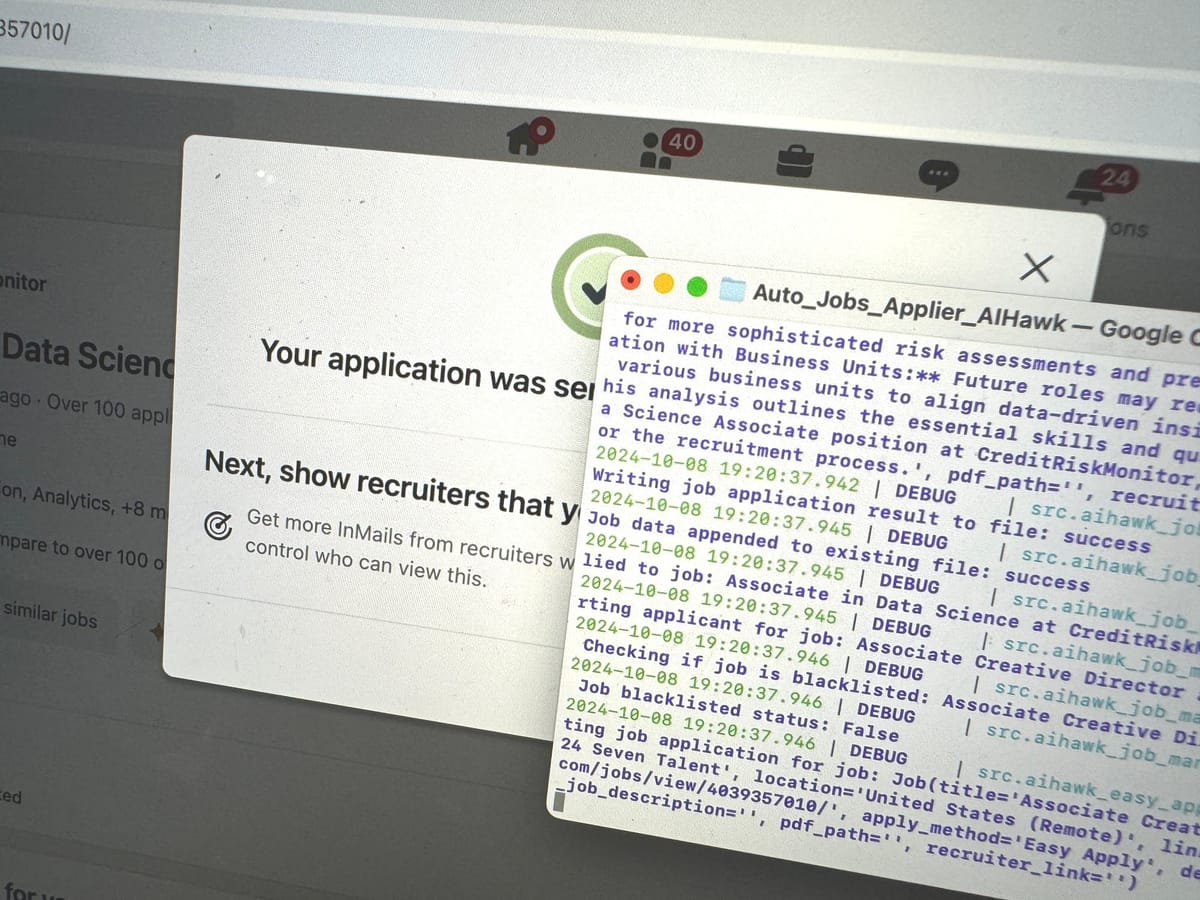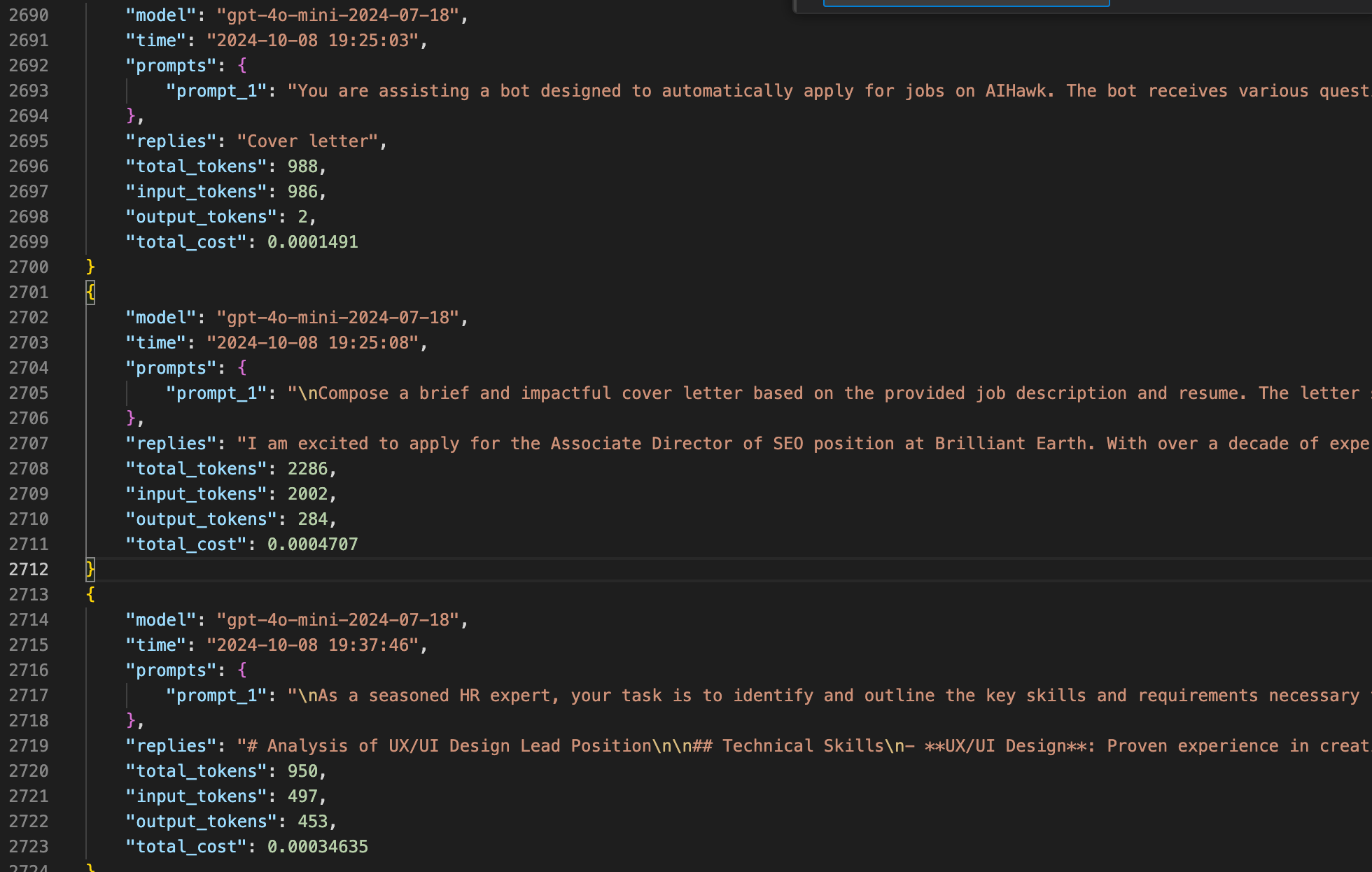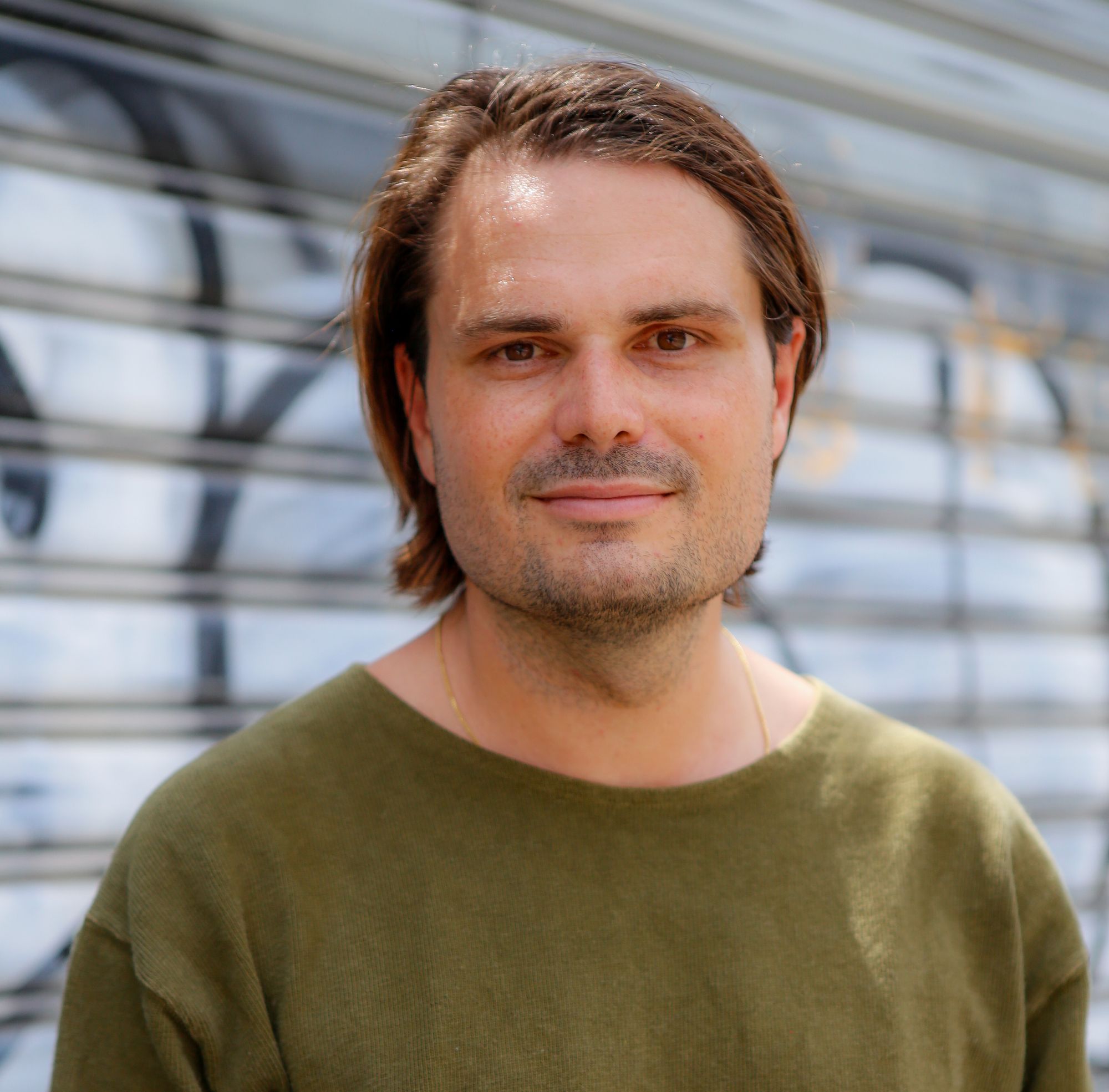Jobs
‘I Applied to 2,843 Roles’: The Rise of AI-Powered Job Application Bots

Before I put my laptop aside at the restaurant I’m working at, I open a terminal window, enter a single command, and hit enter. The server gives me my breakfast and I push my laptop away as the bot springs to life, opening a Chrome window and navigating to LinkedIn. It starts scrolling through job listings, and opens a few of them.
I watch the bot find a job at a company called Alpha Lion and click “Easy Apply.” It enters my biographical information, generates a resume, and writes a cover letter. It tells Alpha Lion I am authorized to work in the United States, that I do not mind remote work and in fact prefer it, that I have not served in the military. It explains that “I am particularly drawn to Alpha Lion’s commitment to personal excellence and innovation in sports nutrition” and that “I am looking forward to the opportunity to discuss how my skills and experiences align with the goals of Alpha Lion and how I can help propel your video marketing efforts to new heights.” It clicks apply. I take a bite of my toast.
The bot finds another job at a marketing firm and tells them “I thrive on building strong teams and driving innovation through entrepreneurship and emerging technologies. Let’s create the future together!” While texting one of my friends, I watch it tell the jewelry company Brilliant Earth that “Your mission to cultivate a more transparent and sustainable jewelry industry resonates deeply with my professional values, and I am eager to contribute my expertise in developing innovative social media strategies that align with your brand’s vision.”
By the time I finished breakfast, I had applied to 12 different jobs all over the United States.
A sample of what the bot looks like in action. I have cut portions of the application process that included sensitive information like my phone number and address.
This is Auto_Jobs_Applier_AIHawk, which is currently “trending” on GitHub and is one of the most popular new projects there. It is actively being used by thousands of people to use AI to automatically apply for jobs on LinkedIn at scale. It is essentially a Python program that navigates LinkedIn and uses an LLM (OpenAI’s GPT products and Gemini both work) to generate custom cover letters and resumes based on a series of biographical details that a user codes into a script and tweaks them as necessary based on the job description and other information that the company has put on LinkedIn. Various tutorials and guides have been created for how to get the code up and running, which basically just requires users to install Python, tweak some code according to a template, program in an OpenAI API key, and log in to LinkedIn. I was able to get the program running within 15 minutes.
In recent days, AI Hawk has gone viral and has inspired a few clones and forks, including a company called “JobMagic,” whose tagline is “apply for jobs while you sleep” and proposes to essentially be AI Hawk for people who can’t figure out how to get the Python code running.
AI Hawk’s Telegram community has 4,700 members and is full of people who have said they’ve gotten job interviews within days of having the AI submit tons of applications.
“Ran it overnight, applied to around 150 jobs. got an HR call this morning..and i’m just getting started lol. I’m gonna have it run 24/7,” one user wrote. “Planning to apply to thousands of jobs. This time I (the candidate) have the leverage, not some random HR.”
“I’ve been using the platform for a little over three months now, during which I applied to 2,843 roles,” another user wrote. “In that time, I’ve had four interviews, received one offer for a Senior Data Engineer role at £85k, and I’m awaiting feedback on another offer, pending the results of a test.”
“So far for less than 4 weeks, I applied to around 200 jobs,” another said. “Six interviews. It’s really painful being unemployed for monthssss and super difficult to get an interview chance in Bay Area. Before using the bot, got rejected for 2 roles at final round interview recently. One that I spent 2months+ with multiple interviews but still I failed. “
“Applied to 200 jobs so far,” another said. “It’s saved me more than 2 weeks of applications at my previous rate. Wonderful application. Absolutely bonkers helpful.”
“Just started and already 20 applications sent in ~20min,” another said. “The bot will be running all night lol.”
The sudden explosion in popularity of AI Hawk means that we now live in a world where people are using AI-generated resumes and cover letters to automatically apply for jobs, many of which will be reviewed by automated AI software (and where people are sometimes interviewed by AI), creating a bizarre loop where humans have essentially been removed from the job application and hiring process. Essentially, robots are writing cover letters for other robots to read, with uncertain effects for human beings who apply to jobs the old fashioned way.
All of this is very dystopian and continues a race-to-the-bottom where the internet more broadly is flooded with AI-generated drek to the point where navigating anything becomes tedious at best and impossible at worst. But in this case, it is at least possible to understand the instinct to use a bot like this as companies, recruiters, and HR software companies attempt to automate away any possible human interaction you might have with a company as part of the jobs application process. (Some HR companies have even proposed “AI employees,” taking the human job candidate out of the equation altogether.)
It also comes as a response to the longstanding problem of job seekers feeling like applying to and interviewing for jobs can be an endless process, which are often filled with requirements to complete tedious assignments and go through many rounds of interviews spread out over the course of months. Through that lens, it is understandable that people may want to automate the beginning stages of a process that is often a nightmare.
AI Hawk was cofounded by Federico Elia, an Italian computer scientist who told 404 Media that one of the reasons he created the project was to “balance the use of artificial intelligence in the recruitment process” in order to (theoretically) re-level the playing field between companies who use AI HR software and the people who are applying for jobs.
“Many companies employ automated screening systems that are often limited and ineffective, excluding qualified candidates simply because their resumes lack specific keywords. These systems can overlook valuable talent who possess the necessary skills but do not use the right terms in their CVs,” he said. “This approach creates a more balanced ecosystem where AI not only facilitates selection by companies but also supports the candidacy of talent. By automating repetitive tasks and personalizing applications, AIHawk reduces the time and effort required from candidates, increasing their chances of being noticed by employers.”
He said part of his ultimate goal is to “revolutionize the job market through a completely AI-driven job board designed to assist both job seekers and companies in overcoming the inefficiencies and lack of personalization present in traditional recruitment processes.” Essentially, this sounds like he wants to create a place where people are more or less automatically matched with jobs; AI applies for jobs, AI reviews them and a match is made.
I asked him if he is worried about a Dead Internet feedback loop where humans are essentially not involved in the process at all. “I understand the concern, but our goal with AIHawk is to create a synergistic system in which AI enhances the entire recruitment process without creating a vicious cycle,” Elia said. “The AI in AIHawk is designed to improve the efficiency and personalization of applications, while the AI used by companies focuses on selecting the best talent. This complementary approach avoids the creation of a ‘Dead Internet loop’ and instead fosters more targeted and meaningful connections between job seekers and employers.”
Elia said that he personally has already been banned by LinkedIn “due to the use of AI Hawk for automating applications.”
A spokesperson for LinkedIn told 404 Media it was already aware of AI Hawk and that automated tools are not allowed on its platform.
“We remain focused on helping recruiters find quality candidates quickly and jobseekers safely find their next role on LinkedIn while protecting the information people share with us,” the spokesperson said. “As part of this, we don’t permit the use of third party software (such as bots) that scrapes or automates activity on LinkedIn. We invest in technology that limits unauthorized activity so that the vast majority of our applicants are real people and our members’ information stays secure.”
It’s worth mentioning that LinkedIn itself has been implementing AI features into its platform and its job application process. LinkedIn encourages users to talk to its chatbot to help generate strategies for applying to specific jobs, for example. “We’ve invested in new AI tools to help professionals more easily find the right job for them,” the spokesperson said. “For example, our new AI powered job experience for Premium subscribers helps job seekers assess if the role is a fit for them based on their skills and experience, and what to do to stand out.”
The source code of AI Hawk reveals the prompts it uses, and shows how it is designed to fill out applications. Specifically, the AI is tasked with creating “ATS-friendly” resumes and cover letters. ATS is “Applicant Tracking System,” a widely used HR automation tool that reviews resumes and cover letters for specific keywords that match the job description before it is ever seen by a human. There are many guides teaching human beings how to write ATS-friendly resumes, meaning we are already teaching a generation of job seekers how to tailor their cover letters to algorithmic decision makers.
While testing AI Hawk, I watched it apply for everything from “Editor Comedy Trailers Video” at TCL North America to “Static Application Security Tester” at General Dynamics and “Senior Digital Designer” at an e-learning platform for first responders. I applied for jobs at Neiman Marcus, a talent agency, a moving company, a credit monitoring company, and a makeup company. In total, I applied for 17 jobs in a little less than an hour, which included me stopping and starting the bot several times as I tweaked various parameters. Doing this cost me $.34 worth of OpenAI tokens.
As I watched the applications get generated, I was pretty surprised by how rote and boring most of the application processes actually were—many did not actually ask any questions about me or ask for a cover letter at all and could have been applied for with a few clicks in a minute or two anyway. For these jobs, it didn’t feel like the AI was actually “doing” anything other than filling in my biographical information and clicking submit. Others had many questions, to which the AI did its best to answer them.

The bot is not perfect. It sometimes tells jobs that I live in Italy rather than the United States. It answers some questions that should be answered with a single word with full sentences and biographical details about myself. I panic-terminated my terminal window because it tried to apply to a job at Tom’s Guide, a publication we love and respect here at 404 Media and a company at which I did not want to spam with an AI-generated application. It then sent two separate cover letters to Alpha Lion. One which was tailored to Alpha Lion (which I mentioned above), and one that explained “my hands-on approach to developing editorial calendars and maintaining up-to-date buying guides will ensure that Tom’s Guide remains a trusted resource for consumers seeking information on antivirus solutions, identity theft protection, and home security products.”
The bot also sometimes gets hung up on specific menu items, gets stuck, and exits the job application process for specific jobs, perhaps forever altering the future path of my life because I will not in fact become a UX Web Designer at TekWissen, “a start-up trying to help other start-ups and small businesses to go online in order to scale up.”
Unless I pay close attention while it’s running or unless I look up what specific calls it made to OpenAI’s API after the fact, I also do not know exactly what the bot is telling companies about me, which could prove difficult if I ever get an interview with any of them. The process truly is automatic—while at the restaurant I went to pee and came back and had applied for two jobs in the two minutes I was gone. Then again, most of what it wrote is so vague that it probably doesn’t matter.
“I believe my collaborative spirit and detail-oriented approach would make me a valuable addition to your creative team,” my AI bot tells one company. “I look forward to the opportunity to discuss how my background and skills can contribute to the exciting journey of helping individuals become superhuman.”










